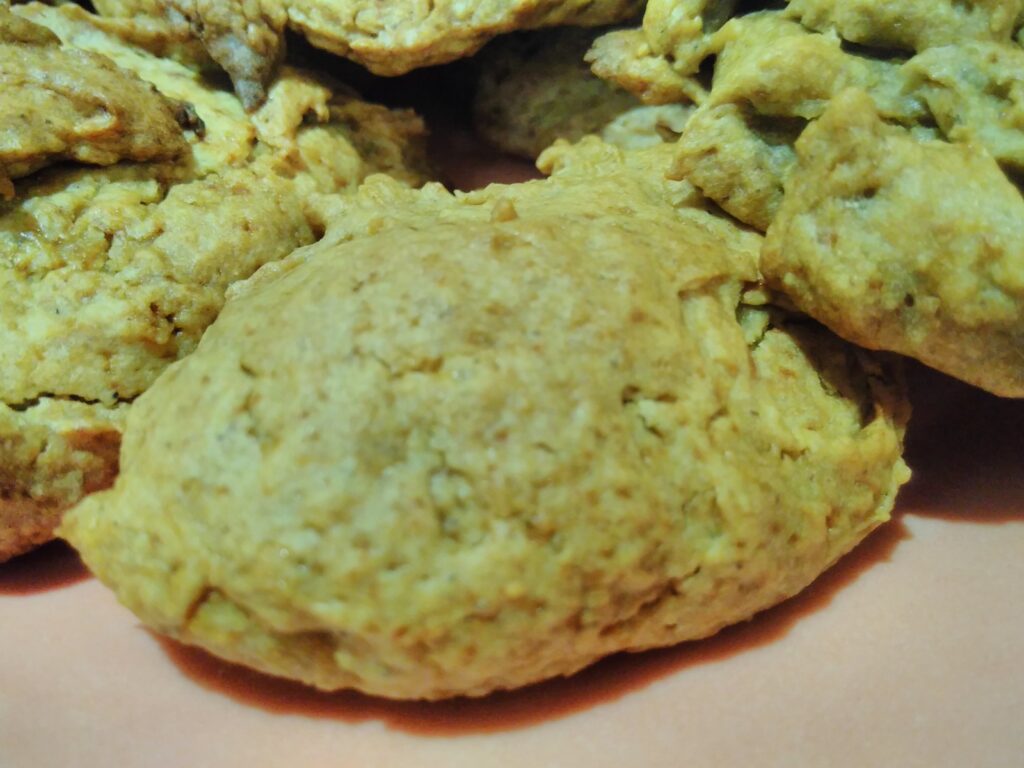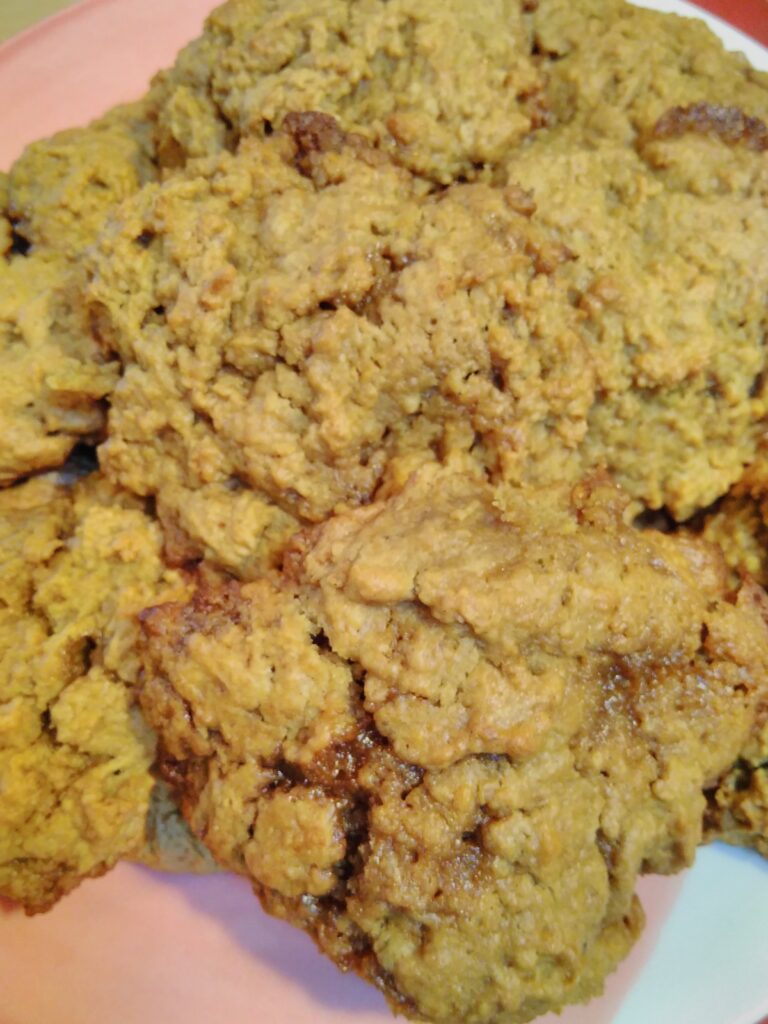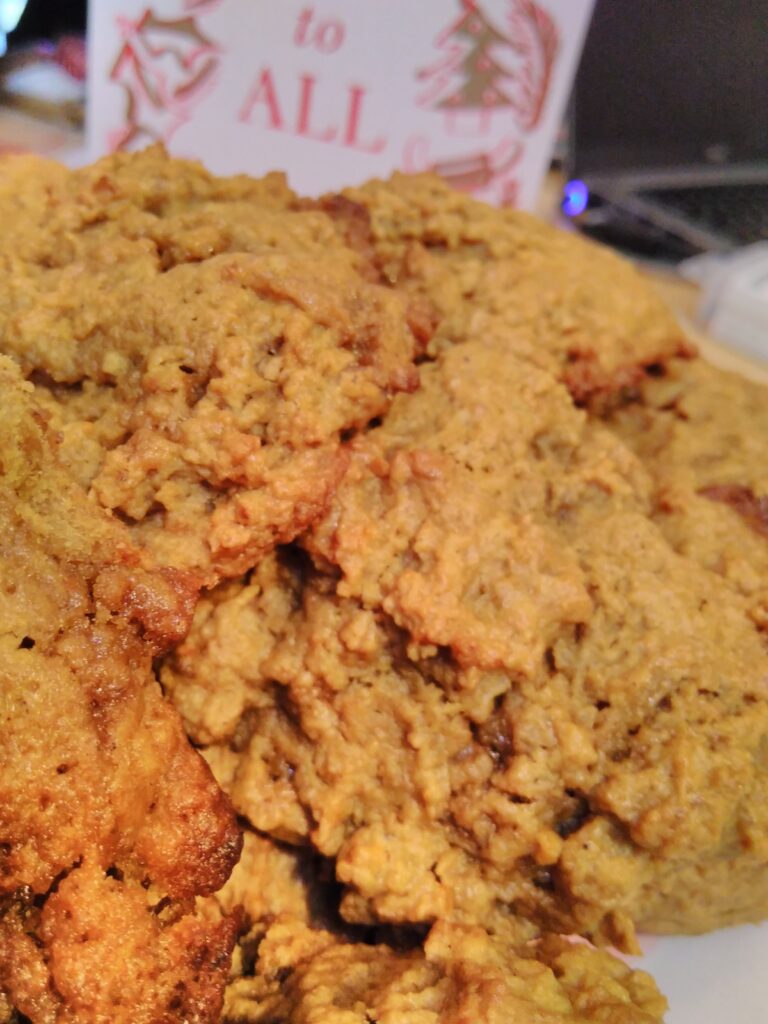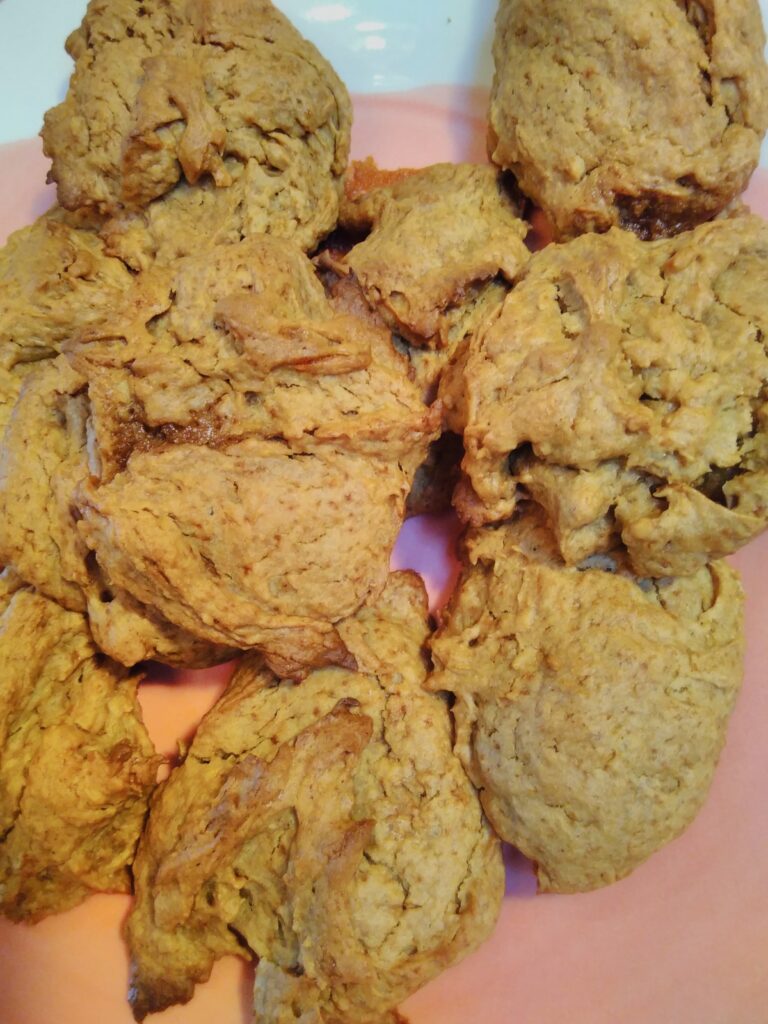Eleven years ago, I posted a treasured persimmon cookie recipe to this blog. But I held something back from you, dear readers. My mother made those cookies many times, but I’m not sure I ever did. Also, the metric conversions were from an online calculator, so potentially dodgy.
Today, I have finally made these. They took just as much time as I feared. My mum had a special tool for pulping things, but I don’t, so it took 40+ minutes to shove the flesh of a less-ripe-than-ideal persimmon through my wire strainer, by mushing it with a rubber scraper.
While making them, I measured all the ingredients with my American cup measure and then weighed them with a kitchen scale. Some of them differ significantly from the calculated version. In this case of the sugar, this may be explained because the Hackney City Farm is only selling an unusual type of raw sugar (date sugar?) that seems more like brown sugar.
I’ve also made steps to veganise it.
The new, metric measurements are:
- 150 g sugar
- 90g margarine
- 2 tsp chickpea flour
- 300g persimmon pulp
- 1 tsp bicarb
- 225g plain flour
- 1 tsp (5 mL) salt (I still use less than Angie did)
- 1/2 tsp cinnamon
- 1/2 tsp cloves
- 1/8 tsp nutmeg
Cream the sugar and the margarine. Add all dry ingredients except for the bicarb. Strain the pulp. Mix everything together. Make sure it’s properly mixed. The margarine-sugar will tend to stay in clumps, which can make the biscuits stodgy.
Spoon the batter on to a biscuit sheet with a soup spoon and bake at 190 C (375 F, gas mark 5) for 10-15 minutes. They will raise as you bake them.
I’ve left off the nuts because somebody on my list is allergic. I used chickpea flour to replace the egg, but any emulsifier will work. I didn’t add liquid because the pulp is already pretty wet, but you could add a few teaspoons of water or soy milk or the like.
Previously, I said that Chris and Angie were an elderly couple over the road. They were Sicilian. Chris was in his late 90s and had worked on the construction of the Golden Gate Bridge before spending the rest of his working life as a gardener for the city of San Francisco. Like many Sicilians, they had summer houses in the hottest part of Cupertino. That community would typically build two buildings – one would be the house and the other would be the kitchen and a semi- outdoor eating area. My neighbours retired to that summer house and it was (one of?) the last of those still standing with that configuration.
Chris taught us a lot about gardening and looking after plants and trees. Even in his late 90s and nearly blind, he would come talk to my mum about looking after the roses and would sometimes just prune them because he loved them. (He also had ulterior motives with regards to my mum, so he wasn’t totally blind.) Angie made amazing cookies and was very generous in sharing her food and her recipes. Neither of them could drive, so my mum would take her around to the shops. Sometimes several shops, as she’d snip coupons from the papers.
Chris was sprightly for a 97 year old man, but had several health problems. Angie used to buy him exotic multivitamins that came in gigantic pills which resembled submarines. When my mum confessed Chris’s proposition to my dad, she was worried he’d be angry, but instead my dad started taking the same vitamins!




